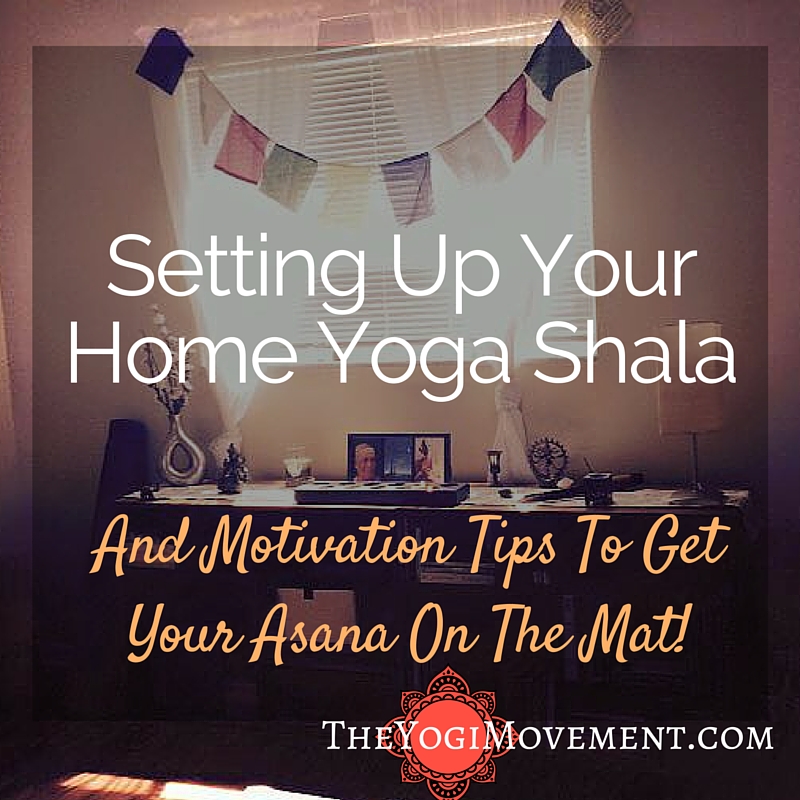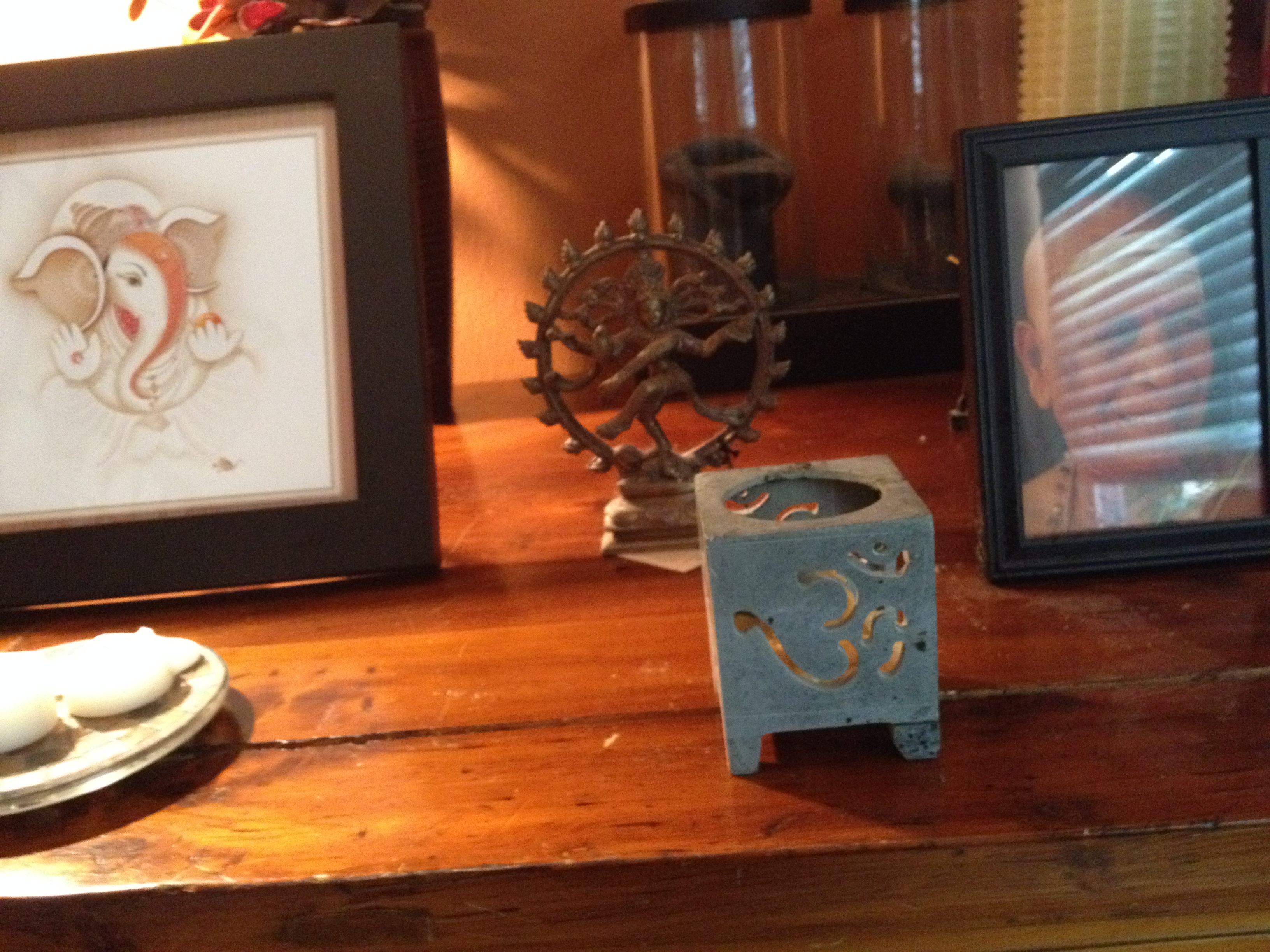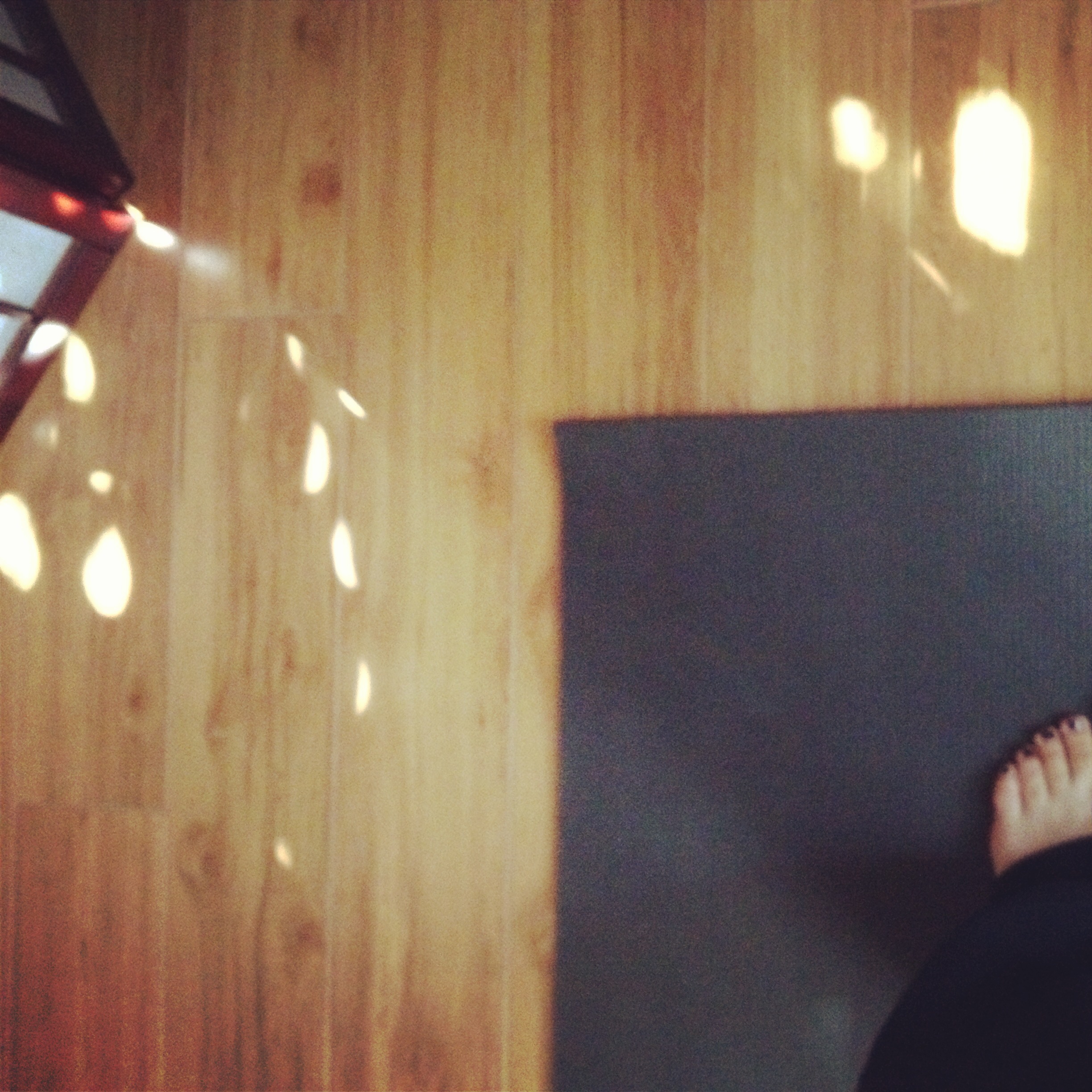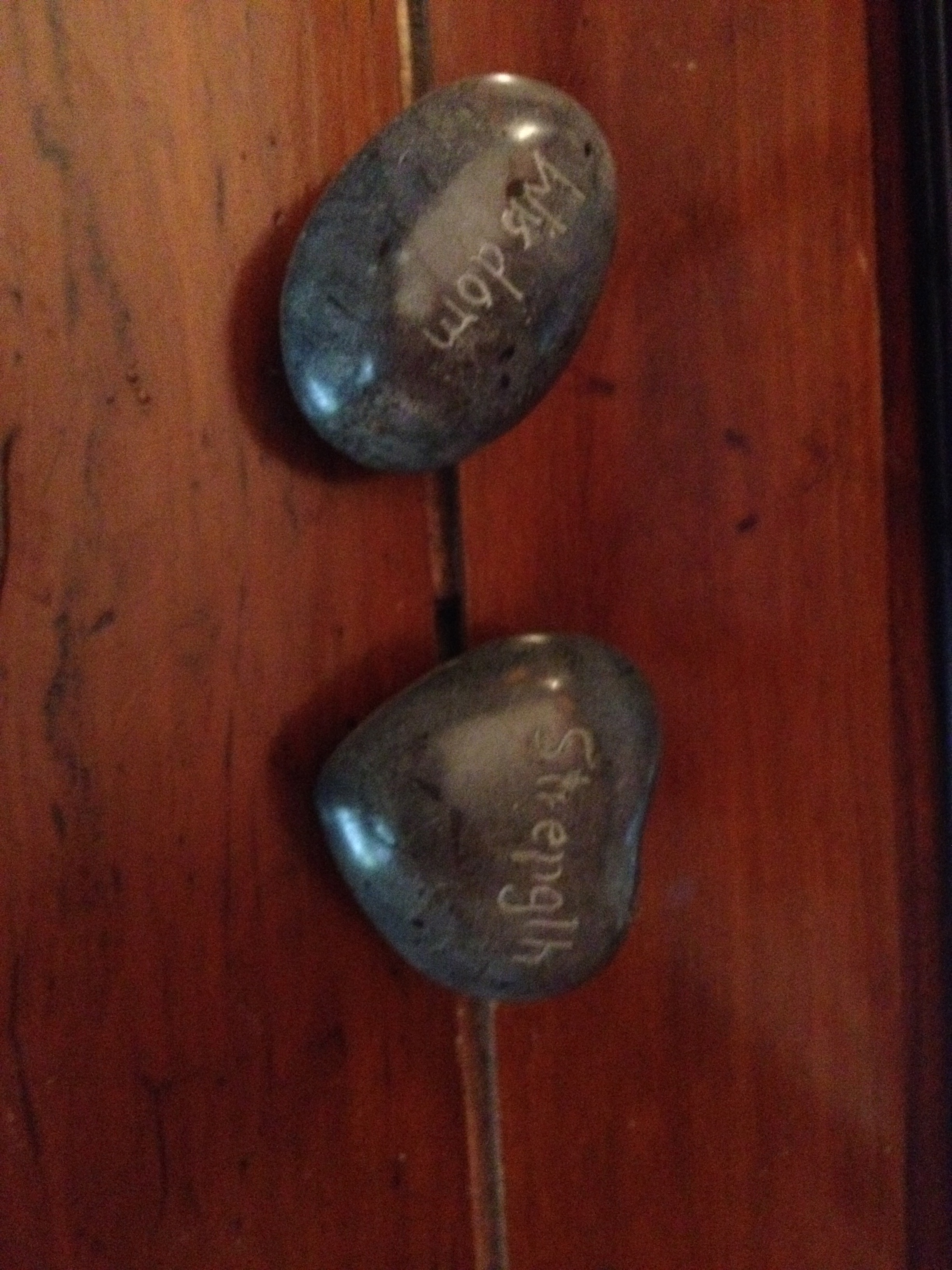When you’re deep in the pattern of going to the same studio for years, 6 days a week, disciplining yourself for a home practice is quite an adjustment period. Just the thought of it can cause some anxiety and bring up issues of attachment and dependency.
We should all be ready for this to happen. Whether it’s because we no longer resonate with a space, a teacher, or we’re moving away, this is a situation that we should be prepared to take on at any moment.
It’s liberating when it’s realized that your practice is always with you and can be taken anywhere. That is one of the gifts of Ashtanga.
It’s quite beautiful, really. No matter where we go in the world, we bring our practice, and automatically connect to a family.
I have experience in moving my practice from a studio to my home. These steps below should help make the transition smooth and simple:
Create an Altar
Your altar should have pictures of Guru’s and anyone else that inspires you.
Add miniature statues of deities or any trinkets that inspire you.
I have a picture of Patthabi Jois, Krishnamacharya, and Buddha. I also have a statue of Green Tara that I got from Nepal. Two little rocks; one says strength and the other wisdom. I have a painting my friend Candice painted me, an OM candle holder my friend Wendy gave me, and a Shiva statue my mom got me. Then, I added few other candles, and some rocks I have collected from retreat centers. I recently created a vision board and now keep that hung above the altar.
Update: I recently added Ani DiFranco, Gala Darling, and Marie Forleo because they’ve been more modern spiritual guides for me.
Make your altar special and personal, and keep your altar and Shala clean.
Usually altars are low to the ground, but you can use any kind of desk.
Make sure the dieties are on the altar and not the floor, they should always be above you.
I use an antique desk my parents gave me. It works out perfect because I have drawers where I keep spare candles, incense, and tea lites.
Just hop on the mat:
Consistency is an important aspect to practice. In the beginning, don’t worry about getting on the mat at the same time everyday, but just be consistent about fitting it in at some point in the day.
As time goes on, schedule your practice in at the same time, and show up.
This creates discipline that will radiate in other areas of your life.
As you continue to recommit daily, the consistency will become easier and more refined.
Accept Where You Are, Forgive Yourself, and Recommit Everyday:
When you begin an at home practice with no teacher or students around, you might feel frustrated that your energy is low or that you give up early.
You might have a hard time getting on the mat some days or skip practice all together.
Remember that the intention is what’s important.
As long as your intention is to get on the mat and practice, then you are practicing yoga. It doesn’t matter if you just practice for a few minutes, or if you are can’t make it to the mat that day.
If you just roll out your mat and do the opening mantra or Balasana, then you are practicing yoga.
During a Kino MacGreggor workshop I attended, she mentioned that Pattabhi Jois considered five sets of Surya Namaskara A&B (Sun Salutations) along with the three final postures a full practice.
Try to utilize all of your options to take practice, and don’t beat yourself up if you are short on time. Just do what you can.
Yoga is a practice of self-inquiry, so as long as you take responsibility, forgive yourself, make the changes, and set the intentions and recommit everyday; you will experience the fruits of the practice.
Experiment with ways to be your own teacher:
I’m not a big fan of props or modifications, but sometimes they are necessary.
At a studio or shala, the teacher is the one to give you adjustments, help you understand what is going on in your body, and guide you into postures.
When you’re practicing at home, you have to be your own teacher. Sometimes a prop can help with this, but I recommend using a prop only as a guide to help you understand the posture, and to work on it both ways at home.
Props should never be a substitute for a posture, but only as a guide.
Props should only be used on occasion, and it’s just a way of experimenting with self-adjustments in an at home practice setting.
Tips that have helped me get on the mat when times are tough:
- Go to sleep before 10pm and get 6-8 hours of sleep.
- Set your alarm.
- Set your coffee maker to start brewing when your alarm goes off.
- Hop in the shower first thing before practice to wake yourself up and warm your muscles.
- Have your clothes laid out the night before.
- Have the home shala clean with your mat ready to go.
- Create a vision board with inspiring quotes and pictures to motivate you. Make sure it’s in a place that you walk by every day.
- Invite a friend over for inspiration.
- Create some pandora stations of music you like to practice to. I have two stations: A ‘new age piano’ station and a ‘chanting and sitar’ station.
A Few Links To Help You Create Your Home Yoga Studio:
- The Yoga Essentials Kit (I originally wrote this to bring to a studio, but these are essentials you can use at home too).
- Manduka Yoga Mats & Props
- Gaiam Yoga Sets
- Statues For Your Alter
- Home Accents For Your Home Shala
- Meditation Pillows
No one should ever be attached to a specific place of practice. The feeling of needing a specific space to practice, or that you cannot practice alone should be explored. This is reason enough to start experimenting with your practice at home from time to time.
When noticing fears or attachments of any kind, it’s my experience that immersing yourself in them will eliminate the attachment.
Or, as one of my teachers describes it, make love to your fears.
How do you motivate yourself to hop on the mat everyday? Do you have any tips or tricks? What is your story about starting your practice at home?
Sun Salutation Sistas Forever,







This was very good advice. I don’t have a routine practice so I often forget the poses. Any suggestions?
Hi! Great question. If trying to incorporate an at home practice without already having a set series of postures there are a few options.
A. You can seek out a teacher to take private lessons with. This person can help you build and refine your practice as time goes on.I recommend shopping around though for a teacher that you resonate with. Here is my info here. https://theyogimovement.com/private-sessions-and-group-classes/
B. You can get a book or video to help teach you. Kino Macgreggor has a great beginners Ashtanga Vid. Here is the link http://amzn.to/1dIoIuX
Here are a few beginner books for Ashtanga yoga As well:
David Swenson Ashtanga Yoga Practice Manuel: http://amzn.to/1aAd4n9
Gregor Maehle Practice & Philosophy: http://amzn.to/1a3hnVd
The Power of Ashtanga Yoga – Kino Macgreggor: http://amzn.to/1ecf1aP
Using videos and books is a good option, but it’s important to have a teacher or someone who can guide and mentor you through the practice as you become more dedicated 🙂
C. Always start out with Sun Salutations and add on posture by posture as you become more comfortable with each one. I am going to start doing a posture column which starts from the very beginning and moves through all of the postures for people wanting to start an at home practice, so stay tuned.
Let me know if you have more questions!
xo,
Monica
oh how i need this—it would negate any excuses.